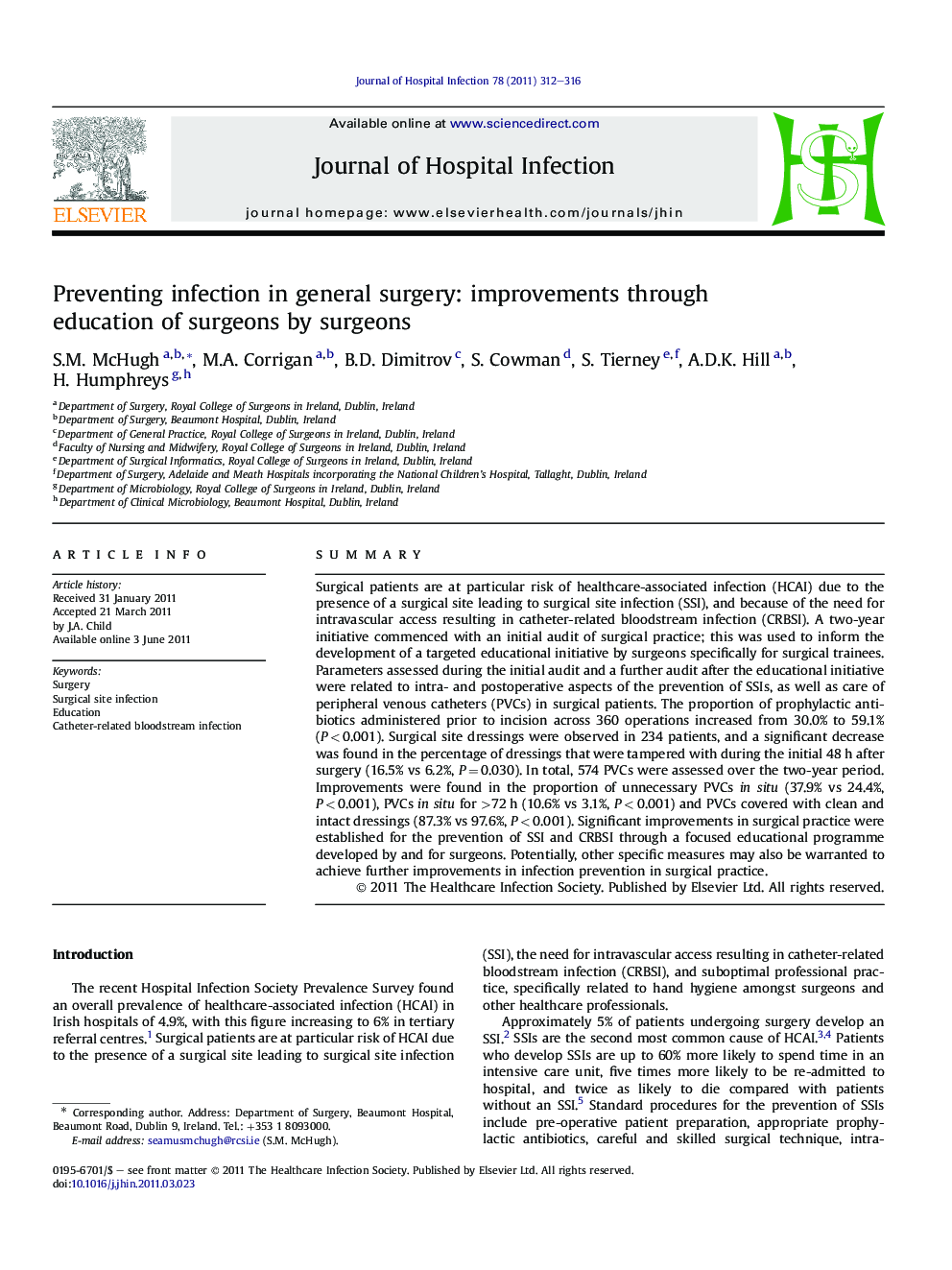| Article ID | Journal | Published Year | Pages | File Type |
|---|---|---|---|---|
| 3372153 | Journal of Hospital Infection | 2011 | 5 Pages |
SummarySurgical patients are at particular risk of healthcare-associated infection (HCAI) due to the presence of a surgical site leading to surgical site infection (SSI), and because of the need for intravascular access resulting in catheter-related bloodstream infection (CRBSI). A two-year initiative commenced with an initial audit of surgical practice; this was used to inform the development of a targeted educational initiative by surgeons specifically for surgical trainees. Parameters assessed during the initial audit and a further audit after the educational initiative were related to intra- and postoperative aspects of the prevention of SSIs, as well as care of peripheral venous catheters (PVCs) in surgical patients. The proportion of prophylactic antibiotics administered prior to incision across 360 operations increased from 30.0% to 59.1% (P < 0.001). Surgical site dressings were observed in 234 patients, and a significant decrease was found in the percentage of dressings that were tampered with during the initial 48 h after surgery (16.5% vs 6.2%, P = 0.030). In total, 574 PVCs were assessed over the two-year period. Improvements were found in the proportion of unnecessary PVCs in situ (37.9% vs 24.4%, P < 0.001), PVCs in situ for >72 h (10.6% vs 3.1%, P < 0.001) and PVCs covered with clean and intact dressings (87.3% vs 97.6%, P < 0.001). Significant improvements in surgical practice were established for the prevention of SSI and CRBSI through a focused educational programme developed by and for surgeons. Potentially, other specific measures may also be warranted to achieve further improvements in infection prevention in surgical practice.
